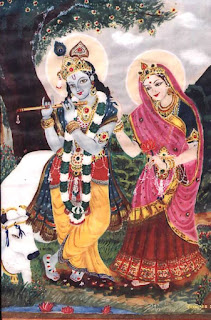In an aptly captioned cartoon “Chennai Super Princes”, the renowned cartoonist Sudhir Tailang really made our day that we waited for all along.

http://www.dc-epaper.com/GalleryView.shtml
 It is a matter of speculation how Karunanidhi is going to deliver the judgment.
It is a matter of speculation how Karunanidhi is going to deliver the judgment.
His initial stroke was with words – expectedly- for what he is originally known.
He waxed eloquent with popular dialogues from ‘bleeding heart’ to the farcically present democratic way of his party in electing the leader.
 But we know how a product of his blood would leap where he can only walk.
But we know how a product of his blood would leap where he can only walk.
Alagiri replied that he is ready for a ‘democratic’ election within his party.
We know what he means when he says this.
And Karunanidhi also knows that.
What is missing is that he has not yet spelt out by how many votes he would win.
Perhaps he would reveal it when the election is announced!
So Karunanidhi has lost in the first round.
Now his acumen will dictate that he would better quit taking sides and instead play the umpire, rather the 3rd umpire - than to be present in the field.
A 3rd umpire will have the privilege of giving the verdict – irrespective of the kind of tempo felt around the field.
So what can we expect from him now?
In this day of Women’s empowerment, he will find it a shrewd move to bring in a third party – a woman who could be a better choice to appeal to the gallery.
Kanimozhi will be his choice.
But that runs the risk of going aground because we have the super trader in Alagiri.
For one who knows the advantages of threats and treats, getting Kanimozhi out of reckoning will not be a problem.
Here the master player in the guise of the 3rd umpire will drop his next ammunition.
If Lalu could bring in Rabri, why not usher in a ‘revolution’ in Tamilnadu too?
An amicable choice will be Dayalu ammaal, the mother of the warring princes, but would Rajaathi ammaal remain a spectator then?
Dayalu will be ready to retire before hurt and so Rajaathi Ammal will enter the field.
With that comes the short Tea - Break.
But before it ends, a shrewd Karunanidhi who would not like to see both the princes lose, will manage to get the State bifurcated and with that ends the much awaited
The princes would rule their respective states happily thereafter.
 What would happen to the daughter then?
What would happen to the daughter then?
As per Tamil culture, girls belong to the other house and would be taken care by regular flow of gifts.
Kalagjar TV will be gifted to Kanimozhi who would also be given a berth in the Central cabinet –
the same tactic of keeping the fighters in different arena that Karunanidhi is following at present for his two sons.
Karunanidhi’s memories of old ties with his nephew can not be wiped out.
So Maran brothers will continue with their respective empires and play to the tunes of Stalin.
Sun TV will become the Voice of Stalin.
But can Alagiri be left mute without a Voice?
Kanimozhi fills the bill and would lend Alagiri the Voice of the TV that she has inherited.
By mutual give and take and with no need to cross each other’s territory, all will proper!
This is the way Tamilnadu politics would shape up.
I say this not with any astrological inputs.
No astrological knowledge is needed to predict what Karunanidhi & Co would do.
No one would raise a whimper as everyone has become partners of the system in some way or the other.
By partners I mean that everyone from the voter to the Highest official share a same bond in being corrupt.
In such a situation, it is day dreaming to expect Dharma to show up its head.
For whom Dharma should come?
To protect whom, Dharma needs to fight Adharma?
Recall Ouvaiyyaar,
அவ்வழி நல்லை வாழிய நிலனே .
Where men are honest and good, the land also will prosper.
This is a far cry as far as Tamilnadu is concerned.
PS:
Just some thoughts from astrological angle.
The Twin eclipse – a solar eclipse following a lunar eclipse – that took place in December – January does not bode well for the king. The effect will be felt between 3 to 6 months as they occurred in common and movable signs.
From my previous article The twin eclipse- effect.
“The present Twin eclipse foretells increasing conflicts and war of words between people and sections of people in the country. There will be an increase in the number of divorces, domestic quarrels and domestic violence.
Thinking of domestic quarrels, somehow the First Family of Tamilnadu comes in my mind. It is because both the eclipses occurred in mid heaven, stretching to the 5th part of the day showing that not all is well with the 'princes'. Today we think we have no monarchy, but in Tamilnadu we do have sons of the leaders as princes.”
The solar eclipse was annular. Annular solar eclipse happening in mid-heavens again foretells trouble to the princes.
From that article:-
“Dissensions among people and between partners,
A low for the traders,
A low for ministers and their sons and the womenfolk in their families,
And an outbreak of a disease can be expected.”
Remark:- In this age of Kali, where Adharma has a field day, even planets can not give the assigned results.
The same Twin eclipse effect would have had a stronger impact had it been the previous times when Dharma stood at least on one leg.
In the current age of Adharma everywhere, Dharma will make a retreat.
Only individuals who still stick to Dharma will be protected by Dharma…hopefully so.













